FOXE1 association with both isolated cleft lip with or without cleft palate, and isolated cleft palate
- PMID: 19779022
- PMCID: PMC2778374
- DOI: 10.1093/hmg/ddp444
FOXE1 association with both isolated cleft lip with or without cleft palate, and isolated cleft palate
Abstract
Nonsyndromic orofacial clefts are a common complex birth defect caused by genetic and environmental factors and/or their interactions. A previous genome-wide linkage scan discovered a novel locus for cleft lip with or without cleft palate (CL/P) at 9q22-q33. To identify the etiologic gene, we undertook an iterative and complementary fine mapping strategy using family-based CL/P samples from Colombia, USA and the Philippines. Candidate genes within 9q22-q33 were sequenced, revealing 32 new variants. Concurrently, 397 SNPs spanning the 9q22-q33 2-LOD-unit interval were tested for association. Significant SNP and haplotype association signals (P = 1.45E - 08) narrowed the interval to a 200 kb region containing: FOXE1, C9ORF156 and HEMGN. Association results were replicated in CL/P families of European descent and when all populations were combined the two most associated SNPs, rs3758249 (P = 5.01E - 13) and rs4460498 (P = 6.51E - 12), were located inside a 70 kb high linkage disequilibrium block containing FOXE1. Association signals for Caucasians and Asians clustered 5' and 3' of FOXE1, respectively. Isolated cleft palate (CP) was also associated, indicating that FOXE1 plays a role in two phenotypes thought to be genetically distinct. Foxe1 expression was found in the epithelium undergoing fusion between the medial nasal and maxillary processes. Mutation screens of FOXE1 identified two family-specific missense mutations at highly conserved amino acids. These data indicate that FOXE1 is a major gene for CL/P and provides new insights for improved counseling and genetic interaction studies.
Figures

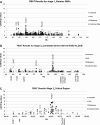
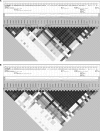

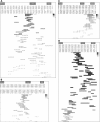
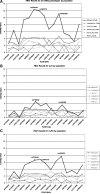

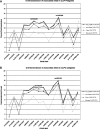



References
-
- Field L.L., Ray A.K., Cooper M.E., Goldstein T., Shaw D.F., Marazita M.L. Genome scan for loci involved in nonsyndromic cleft lip with or without cleft palate in families from West Bengal, India. Am. J. Med. Genet. A. 2004;130A:265–271. - PubMed
-
- Prescott N.J., Lees M.M., Winter R.M., Malcolm S. Identification of susceptibility loci for nonsyndromic cleft lip with or without cleft palate in a two stage genome scan of affected sib-pairs. Hum. Genet. 2000;106:345–350. - PubMed
Publication types
MeSH terms
Substances
Grants and funding
- R01-DE016148/DE/NIDCR NIH HHS/United States
- R01 DE014667-8/DE/NIDCR NIH HHS/United States
- P50-DE-16215/DE/NIDCR NIH HHS/United States
- R21-DE016930/DE/NIDCR NIH HHS/United States
- R01-DE012472/DE/NIDCR NIH HHS/United States
- R01 DE016148/DE/NIDCR NIH HHS/United States
- ImNIH/Intramural NIH HHS/United States
- N01-HG-65403/HG/NHGRI NIH HHS/United States
- DE-08559/DE/NIDCR NIH HHS/United States
- DE-11948/DE/NIDCR NIH HHS/United States
- K02 AEO15291/PHS HHS/United States
- 1 R03-TW-007644/TW/FIC NIH HHS/United States
- R01-DE09886/DE/NIDCR NIH HHS/United States
LinkOut - more resources
Full Text Sources
Medical
Molecular Biology Databases
Miscellaneous

